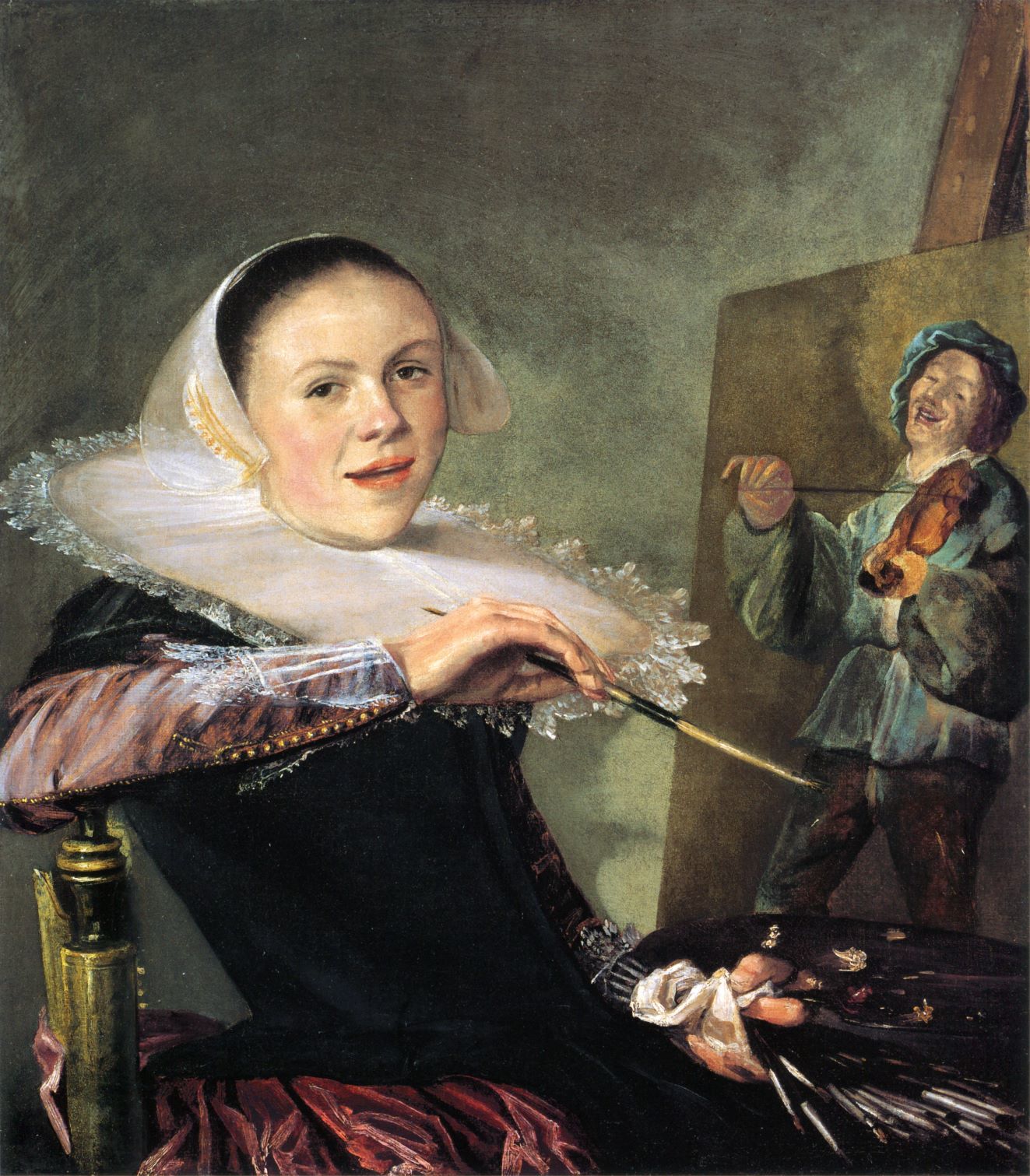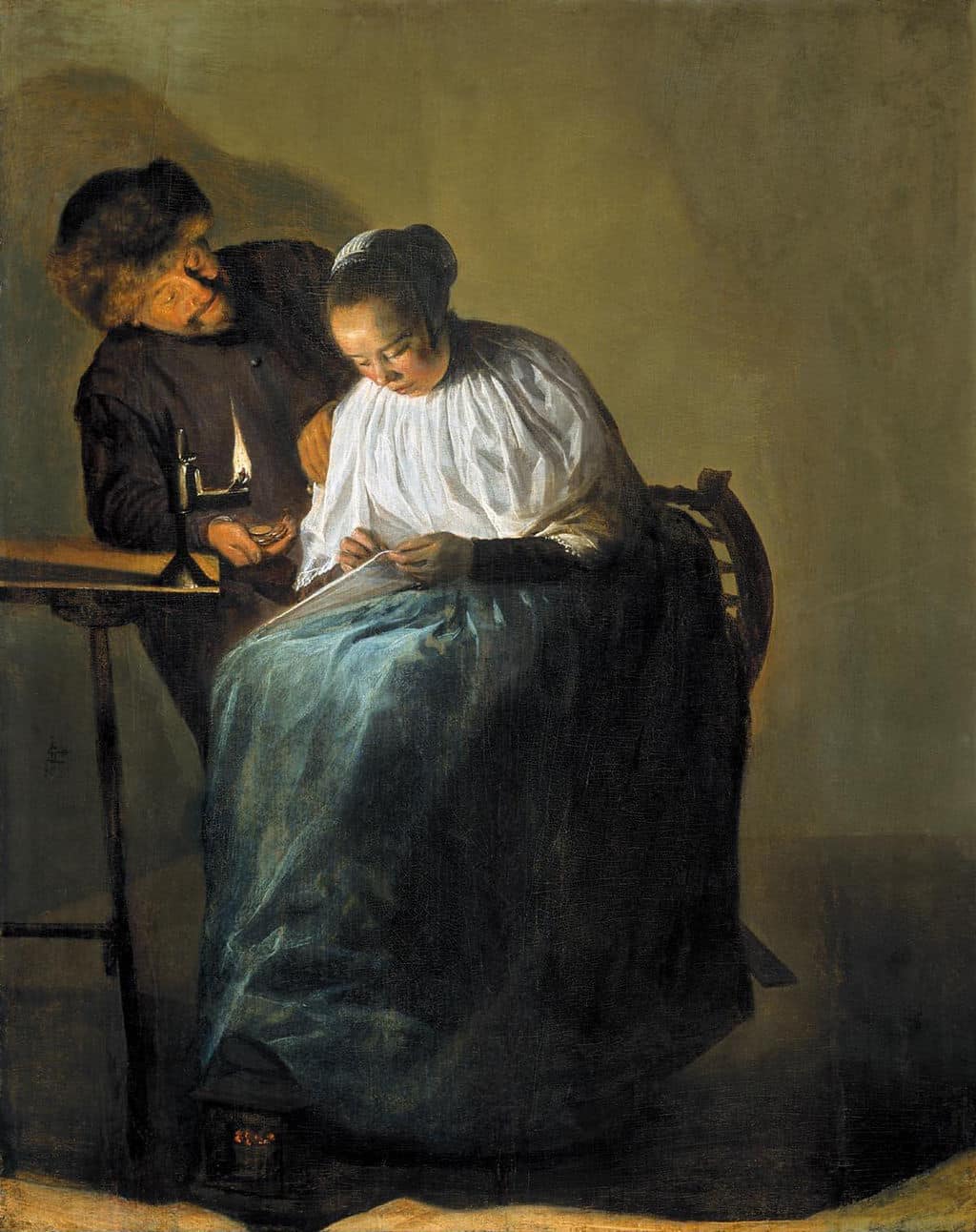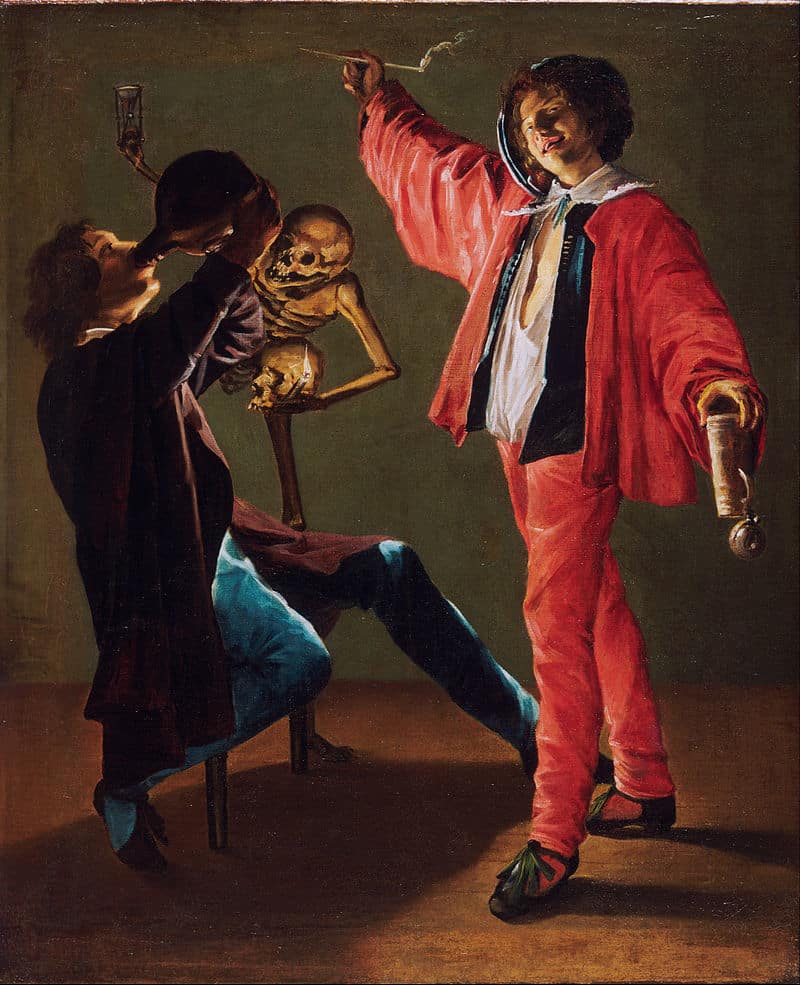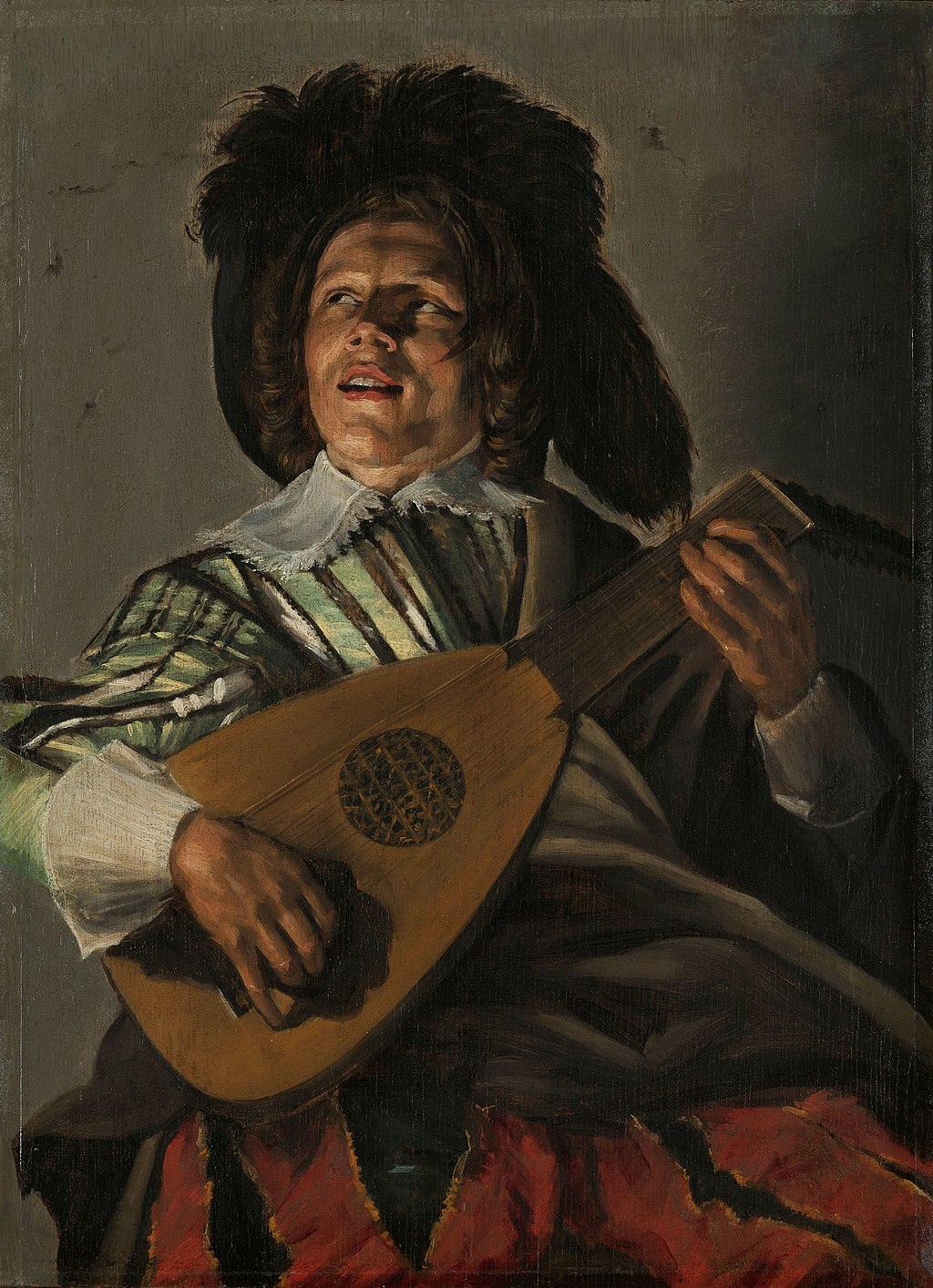In the past, female artists have not always been valued. Most were overshadowed by their male counterparts, excluded from education and the art world, so that their names never appear in the history books. Heleen Debruyne takes them out of oblivion and gives them the honour they deserve. In the third episode we present you Judith Leyster: ‘It was only in the late 20th century that experts began to see Leyster for what she was: a great painter who might have become even greater if she had not stopped painting.’
Judith Leyster feels good in her skin. From out of her self-portrait (1633), she looks the viewer straight in the eye and laughs herself silly. And with good reason: she was not allowed to join the Haarlem Artists and Painters Guild, yet her work sold so well that she was able to found a studio full of apprentices. In an expensive, wide and completely uncomfortable lace ruff, she paints as though the practice of her trade is effortless. The violin player on the canvas in front of her seems to serenade her.
 Judith Leyster, Self-portrait, circa 1630
Judith Leyster, Self-portrait, circa 1630© National Gallery of Art, Washington
Her genre paintings were very popular with the newly rich bourgeoisie of Golden Age Haarlem. And all of this for the eighth child of a bankrupt brewer! Of course, it’s possible that it was that bankruptcy that gave her the chance to use her painting skills to earn a living. Normally, daughters did not go out to work but were expected to marry. The young Judith probably began to exploit her talents precisely in order to contribute to the family income. It’s likely that she learned about painting from the competent, if slightly dull, Haarlem artist Frans Pietersz de Grebber.
The lively naturalness of Judith’s sparkling genre paintings is reminiscent of her famous contemporary, Frans Hals – and the chance is great that she also studied with him. In any case, she was certainly inspired by him. Her connection with Hals remains unclear: there are indications that she was at his child’s baptism. But she also brought a lawsuit against him because he appropriated one of her apprentices without her permission. Hals had to pay a fine, but he kept the apprentice. The case kept Judith’s name in the public domain, which was good for her business.
 Judith Leyster, The Proposition, 1631
Judith Leyster, The Proposition, 1631© Mauritshuis, The Hague
Viewers who look at her paintings of happy, card- or music-playing young people might think that the relations between men and women in the Golden Age were unforced and on an equal footing. It’s not true. In Man Offering Money to a Young Woman, sometimes called The Proposition (1631) an older man in a fur hat seems to be making a proposition to a modest-looking seamstress. He has a handful of gold coins. But what type of service is he after? Sewing or something else? And why does she keep her head down and focus so intently on her work? The mood is ominous. We fear that, for her – whether she’s a chaste woman or a prostitute – things will not end well.
 Judith Leyster, The Last Drop, ca 1630
Judith Leyster, The Last Drop, ca 1630© Philadelphia Museum of Art, Philadelphia
The figures in The Happy Company (1630) seem too drunk for their own good. And in The Last Drop (c. 1630) a leering skeleton looks on as a jolly cavalier upends an empty tankard of ale. Leyster’s compositions are seldom simply jolly despite their outward appearance.
Despite her great talent, Judith stopped painting in 1636. After her marriage to the undoubtedly less talented genre painter Jan Miense Molenaer, her time was taken up with raising five children and managing his studio. Or did she in fact work there as a painter? In any case, she safeguarded her own ambitions. Between the nappies, cookpots and bookkeeping she still found time to draw a tulip in a flowerpot.
 Judith Leyster, The Serenade, 1629
Judith Leyster, The Serenade, 1629© Rijksmuseum, Amsterdam
After her death, she was forgotten. Her work still circulated within the art-loving community but was often ascribed to Frans Hals. There are, indeed, many noteworthy similarities: the loose brushstrokes, the expressive faces, the light and shadow: such a good painting could not possibly have been done by a woman, people seemed to think. Her monogram, however, was particularly recognisable: an intertwined J and L and a star – a pun and a reference to the North Star, also called the Leister (navigation star) in 17th-century Dutch – and, in 1893, this individual mark was discovered under the forged signature of Hals on a painting falsely attributed to him. The buyer of this painting was furious! Instead of a genuine Hals, he had been sold a painting by some unknown female artist! He took the art dealer to court. No one seemed to care that a new, obviously talented, painter had been discovered.
For many years afterwards, her paintings, with her original monogram, were described – and dismissed – as “imitations of Hals”. It was only in the late 20th century that experts began to see Leyster for what she was: a great painter who might have become even greater if she had not stopped painting. For her 400th birthday in 2009, she was honoured with a retrospective at the prestigious National Gallery of Art in Washington D.C. Reason enough to laugh back at us from her self-portrait.












